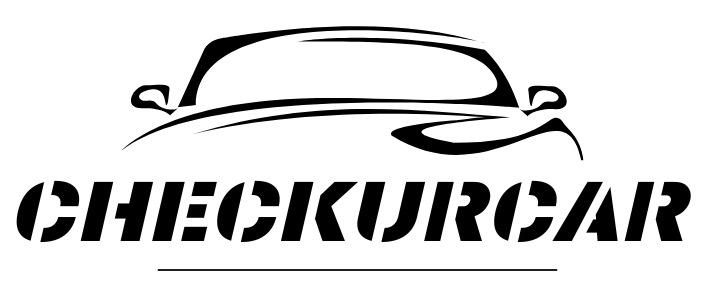Checking CV joints in the car is essential to know the health condition. CV means constant velocity, and it keeps the lubricant grease from coming out. Moreover, before driving the car for a long drive, you should also check out the CV joints on the car to hassle-free driving.
So, how to check CV joints in the car? To check CV joints, you have to ensure that your car’s CV joints are damaged. After that, you have to jack up the car and need to check all of the joints. Overall, you will need to complete a simple process to check your car’s CV joints.
This article helps you to get 7 complete steps so that you will completely check the joints. Similarly, the article is also ready to provide other information about this matter so that you can easily check your car’s CV joints.
What Is CV Joint?
Generally, a constant velocity joint is known as CV Joint. It is a crucial part of the car drivetrain. CV joints allow the transmission power from the engine to the wheels.
There are two types of CV joints you will discover, such as inner and outer. First of all, the inner CV joint connects with the axle to the transmission. It is also the main part of the CV joint of your car.
Similarly, the outer CV joint connects with the wheel hub. However, both of the CV joints are closed in a rubber protective bot which maintains the lubricant.

Symptoms of Bad CV Joints
There are plenty of bad symptoms you will discover from bad CV joints. But some of them are so close, and you often find them on your car CV joints. Let’s break down the following list of the 5 symptoms so that you can easily understand the problem and solve it as soon as possible.
Loud Noises
When you turn the steering wheel of your car and hear annoying noises like clicking or popping, you need to understand that your CV joint is broken or comes with other problems.
You should test to ensure that the CV joint comes with the problem. However, check out the following checklist so that you can ensure the problem.
- Shift the gear into reverse
- Step on the gas pedal
- Turn the wheel all the way to keep the car on the side
You should test these three points so that you can ensure the problem. If you think that this point is not applied, you can jump to the following point.
Tire Edge Grease
When you are notified that the edge grease on the tire or a tiny crack is probably a bad sign of CV joints, this problem is an indicator that helps you to understand that you need to solve the CV joint problem.
Vibration
A worn or damaged CV joint creates a vibration problem. When you are driving your car, you will face this problem. The acceleration created more vibration problems. When the vibration is too excessive, you may hardly control the car.
how to test CV joints?
Now, you have some ideas that help you understand that your CV joint has some issues. However, check out the following step-by-step guidelines so that you can easily check CV joints on your car by yourself.
Step 1: Jack Up
It is harder to check up on the CV joints when your car is in the ground. So, you need to raise up the car using a jack. You can purchase a jack from the market by spending $5. So, jack up the car and jump the following steps.
Step 2: Clean Up the Fender and Front Suspension
When you raise the car, you will find the fender and front suspension with dirt, dust, and filth. So, try to remove them. If the dust or mud comes with depth, you can use soap and water to clean them properly.
Step 3: Lock the Steering Wheel
Turn the full steering wheel lock. It helps you to enter your head in the room behind the wheel hub. Here, you can easily check out the CV joints without making any mistakes.
Step 4: Tide Up
Most of the CV joint boots come in metal or plastic. You should check each of the CV joints. If the CV joints are tight properly, it is all right. If they are not tight properly or missing anything, you have to fix them to check out the CV joints properly.
Step 5: Box Clever Issue
At the inner end, you will find the box clever. You need to check out that grease-leaking sign. Beside checking it, you should check click, boot, and other things again. If they tighten properly, you can jump the following steps.
Step 6: Give Them a Massage
The rubber CV boots should be pliable. If they are dry and inflexible, the CV joint parts are not much longer. You have to be careful about this matter. This problem also creates bad noise when you drive the car for a long time.
Step 7: Road test, Clean, and Repeat
If you are unable to hear any noise or click, as well as leak and crack, you need to clean everything properly. If you still face the problem, you can take a picture of all of the CV joints and get help from an expert.
On the other hand, you can go for a test drive. Drive the car on a clean road with lots of parking. You can test each of the above steps one by one to get a clear checklist.
Can a Bad CV Joint Affect the Transmission?
The answer is yes. If your CV joints are damaged, your car transmission is affected. When the transmission comes with a problem, you may find some core problems in operating the car.
On the contrary, a bad transmission causes hard shifting problems. Due to this problem, you will discover a vibration problem that breaks down your concentration to drive properly.
Moreover, bad CV joints also affected the transmission and axle seal. Overall, you will get normal driving hampering issues when your car transmission is bad enough.
Causes of bad CV Joints
CV joint problems come from several sources. Here, you will discover some core causes that make your car CV joints bad enough. So, let’s get started.
Lack of Lubrication
CV joint lubricant is critical and functional. There are plenty of reasons worked which lack the lubricant and make the CV joints bad enough. Regularly inspecting the oil and the CV joints helps you to protect the CV joints of your car.
Wear & Tear
The CV joints wear and tear over time. It is a natural process. Based on the CV joints materials or other things, the wear and tear times depend. If you find any components of CV joints that are torn or worn, you should replace them as soon as possible.
Accidents or Impacts
Sometimes accidents create CV joint damage problems. It would help if you focused on this point to find out the CV joint problem easily. On the other hand, impacting the nuts or other elements of the CV joint also created this problem.

Replacement or Repair Cost of Bad CV Joints
Based on the car types and the shop, the cost depends. However, the CV joint itself costs nearly $80 to $300. To complete the task, the labor needs to spend 2 to 3 hours.
So, you need to provide them with the money for their work. The labor cost should be $160 to $360. Overall, the total cost of repairing the bad CV joint is nearly $240 to $600.
If you have a good relationship with the shop owner, you may need to spend less money to repair the bad CV joints. You should contact a reputed shop about this matter to know the accurate cost.
FAQs (Frequently Ask Questions)
Q: What does a bad CV joint sound like?
Answer: You will discover some symptoms from bad CV joints, and sound is one of them. You will discover two types of noise from a bad CV joint, such as pooping and clicking. These two oils only come when your CV joint components crack and leak.
Q: Can I still drive with a bad CV joint?
Answer: You should not drive your car when it comes with a bad CV joint issue. Because it affected transmission and also created other problems, the strong vibration makes the path harder to drive, and you may make an accident in this condition.
Q: How do you measure a CV joint?
Answer: If you want to measure a CV joint health condition, you need to raise the car first. After that, you have to check the clever box, edge tire grease leaking, and so on. I love to suggest you check out the above checklist to measure the CV joints of your car.
Conclusions
CV joints are always essential to get a good driving experience. You will find vibration, noise, and other issues when CV joints come with any issues. However, you should check out the CV joints regularly to safely drive the car and fix the problem without damaging deeply.


![How to Check CV Joints on Car? [7 Steps Need to Complete to Check] How to check cv joints on a car](https://checkurcar.com/wp-content/uploads/2023/07/How-to-check-cv-joints.jpg)